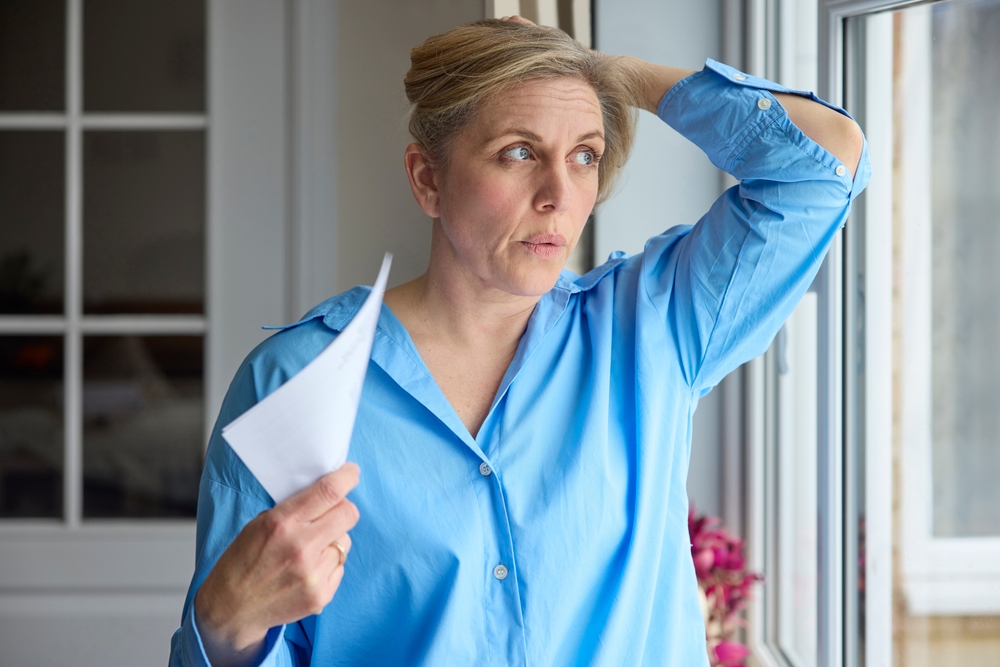Navigating Perimenopause through the Power of Movement

Perimenopause is a significant transition in a woman’s life and as it directly affects half of the population and indirectly the other half, it is worth us all understanding this process a little bit better. This often challenging time can be accompanied by a wide variety of possible physical and emotional changes.
Common symptoms of perimenopause may include:
- Irregular Periods: One of the earliest signs is perimenopause is when periods may become less predictable in terms of timing, flow, and duration.
- Hot Flashes and Night Sweats: Sudden feelings of warmth, often accompanied by sweating, especially at night.
- Sleep Disturbances: Difficulty falling asleep, staying asleep, or experiencing night sweats can lead to poor sleep quality, resulting in a reduced ability to focus.
- Mood Changes: As our hormones change and fluctuate there is an increased risk of mood swings, anxiety, and depression.
- Weight Gain: Hormonal changes can lead to weight gain, especially around the abdomen.
- Vaginal Dryness: Decreased oestrogen levels can cause vaginal dryness, discomfort and pain.
- Breast Tenderness: Hormonal fluctuations can lead to tenderness and discomfort in the breasts.
- Memory and Concentration Issues: Often referred to as “brain fog,”, can also include forgetfulness and difficulty concentrating.
- Changes in Cholesterol Levels: Oestrogen helps maintain healthy cholesterol levels, so its decline can lead to higher cholesterol.
- Low Bone Density: Reduced oestrogen levels can also lead to decreased bone density, increasing the risk of osteoporosis.
- Digestive Issues: Some women experience changes in digestion, such as bloating, constipation or upset stomachs.
- Aches and Pains: Joint and muscle aches can become more common.
- Cold Flushes: Some women experience sudden chills or cold flashes, similar to hot flashes but in the reverse.
Mental Health Impact
Perimenopause can also have a significant impact on mental health, with symptoms like low mood, anxiety and changes in self-esteem being common. It’s important to recognise these symptoms and seek support if needed.
One way to help us best manage this phase effectively is by incorporating more movement into our daily routines, particularly through incidental exercise. These seemingly small, everyday activities can play a helpful role in maintaining overall health and wellbeing during perimenopause.
Understanding Incidental Exercise
Incidental exercise can help us to increase movement during perimenopause and refers to the physical activity you get from your daily routine activities. Unlike structured workouts, it’s the movement that happens naturally as we go about our day-to-day tasks. This form of exercise is especially beneficial for those experiencing perimenopause, as it helps in managing symptoms, boosting energy levels, and combating a slowing metabolism.
Examples of Incidental Exercise
- Pottering Around the House. Tidying up, moving items, hoovering, doing the washing and pacing while thinking all count as valuable movement. These small bursts of activity contribute to muscle tone and cardiovascular health.
- Gardening. Engaging in gardening not only works various muscle groups but also connects us with nature, gets us outdoors and provides mental health benefits along with physical exercise.
- Decluttering. Sorting, lifting, and organising can be a surprisingly physical activity. Decluttering not only creates a more organised space but adds to your daily movement, helping us to feel more organised and in control.
- Running Errands on Foot. Instead of driving, walk to complete errands. This practical approach not only increases your step count but also offers a mental break and fresh air.
- Walking the dog. This helps us not only to move more but also to get outside and into the fresh air will help with our mental wellbeing.
The Benefits of Incidental Exercise
Incorporating incidental exercise into your daily routine can lead to an increase in your Total Energy Expenditure Daily (TEED), which helps in weight management and overall metabolic health. By integrating movement throughout the day, there’s no need to carve out a specific time for a gym session every day but enables exercise to become a natural part of your routine.
Tips to Increase Incidental Exercise
- Park Further Away. Choose a parking spot that’s a bit farther from your destination and enjoy a stroll.
- Set Timers for Short Breaks. Use a timer to remind yourself to take regular breaks and move around, especially if you’re working at a desk.
- Take the Scenic Route. Take longer routes when walking to your destination to increase your steps.
- Stretch While Watching TV. Incorporate light stretching or exercises during screen time, this is called habit stacking eg: building on one habit to make small positive changes.
- Choose Stairs Over Lifts. Whenever possible, take the stairs to add a bit more movement to your day.
Movement and Social Media Time
Even during social media scrolling, there are ways to keep active:
- Stand up and do calf raises or squats.
- Set a timer to remind yourself to take breaks for quick stretches or walks.
- Use your phone’s speaker for hands-free light exercises.
- Pace around the room instead of sitting still.
In Conclusion
Perimenopause can be a challenging time for all, but by incorporating incidental exercise into your daily routine it can help women to manage symptoms more effectively and maintain a healthier lifestyle. Embracing these small movements ensures that our physical activity becomes a seamless and enjoyable part of everyday life. The journey through perimenopause can be smoother and more empowered with the power of movement.
If you would like to chat more about how to build movement into your week, both structured and incidental please get in touch.
You may also wish to link to other previous blogs:
